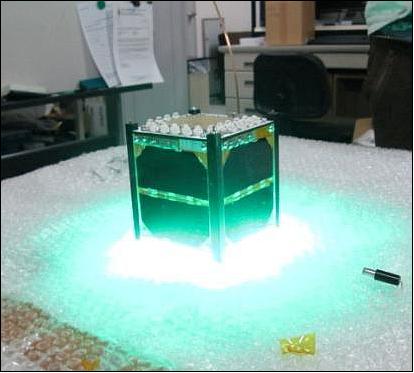Clearly not a duplicate! of Why does the International Space Station have a downward facing light?
This answer to How does the Starlink satellite shine? begins with
Starlink (and other satellites) categorically do not have exterior lights or illumination, that would be a waste of power for no particular benefit.
and that got me thinking. FITSat-1 was a 1U cubesat and had a bunch of LEDs on its exterior. It was programmed to blink Morse code and designed to be visible to people on the ground.
Question: Is this the only case of a satellite equipped with lights designed to be seen by people on Earth? I'm primarily asking about satellites that were built and ready to fly rather than plans or designs.
From eoPoportal's FITSat-1 (Fukuoka Institute of Technology CubeSat) / Niwaka



